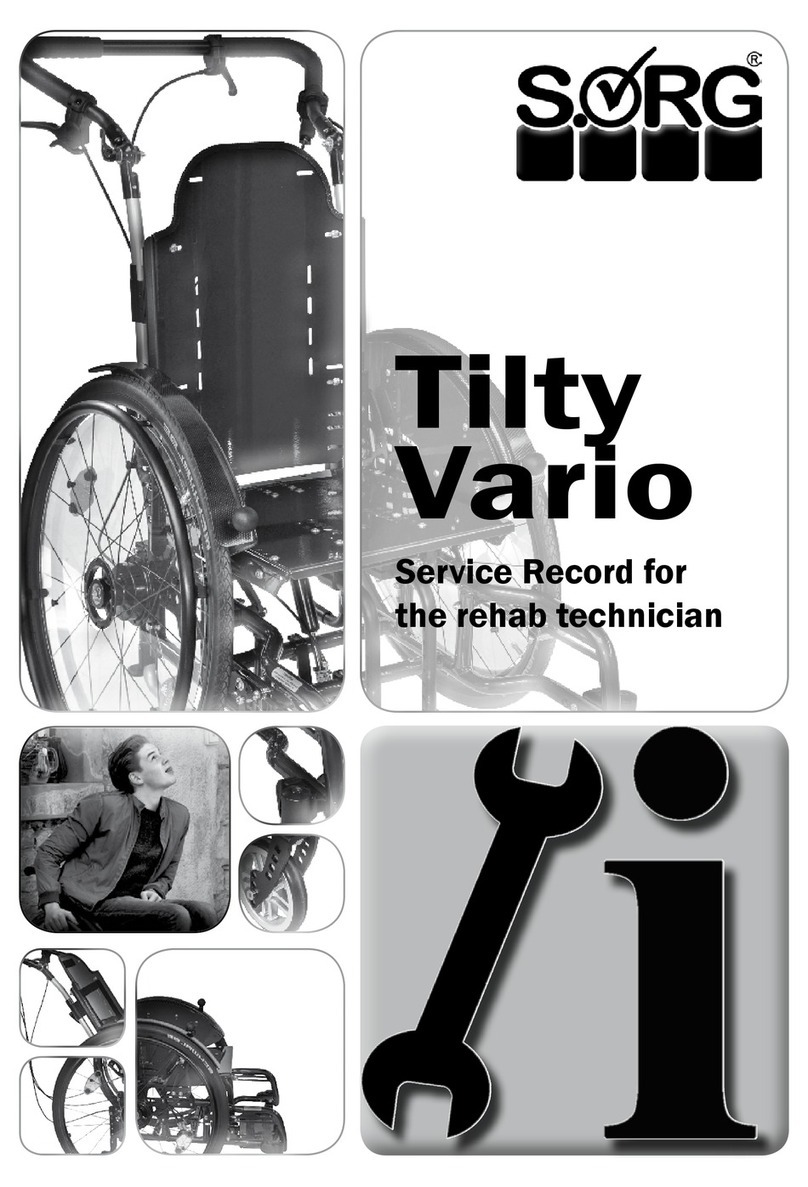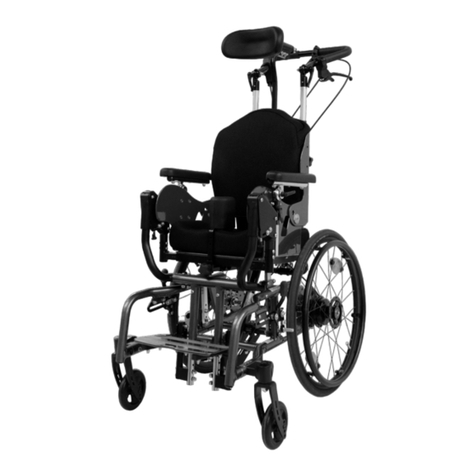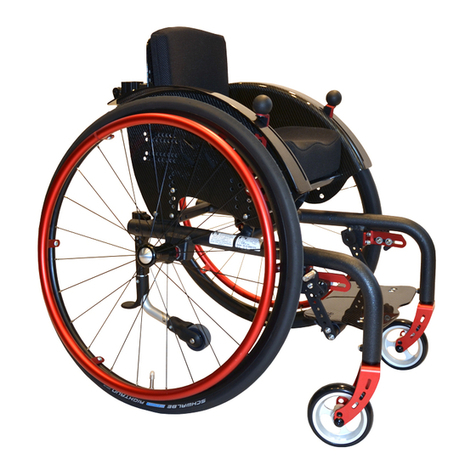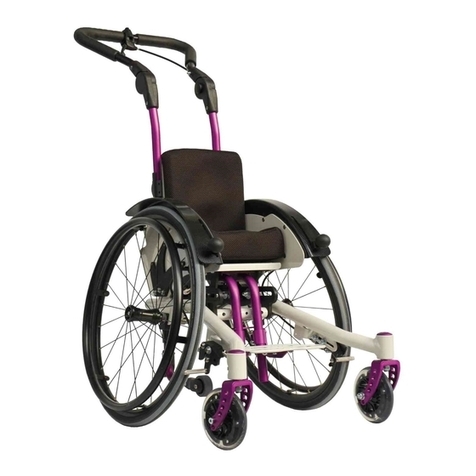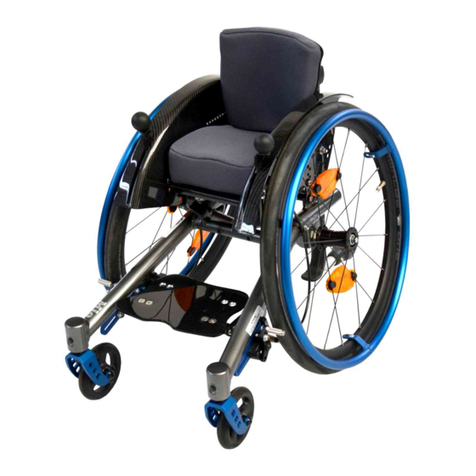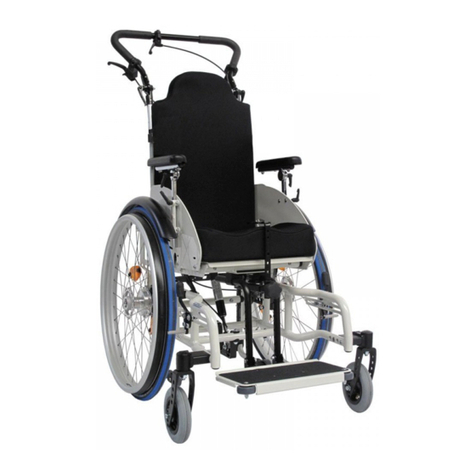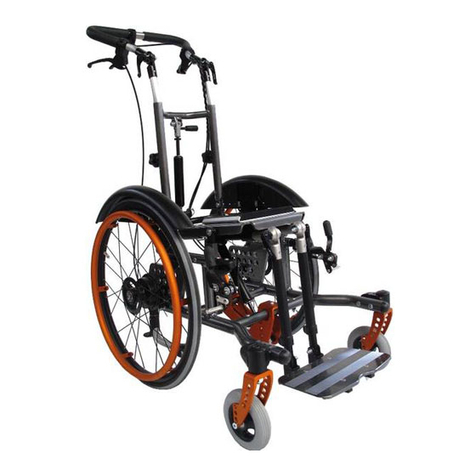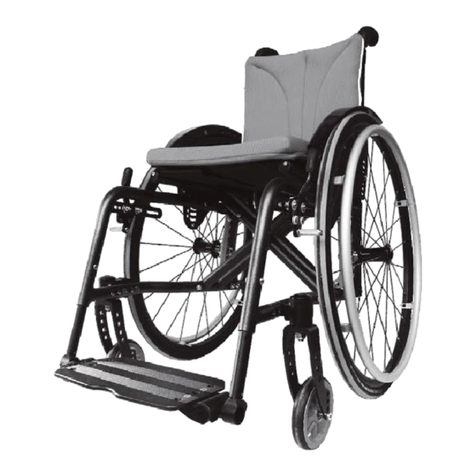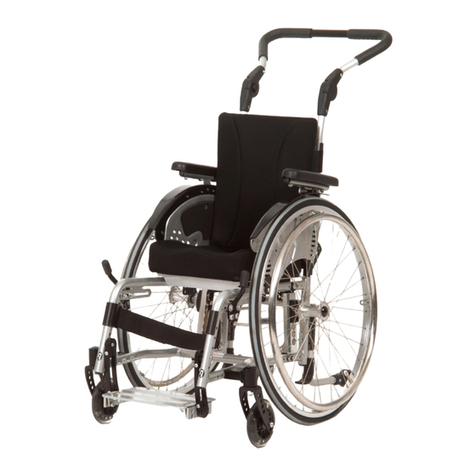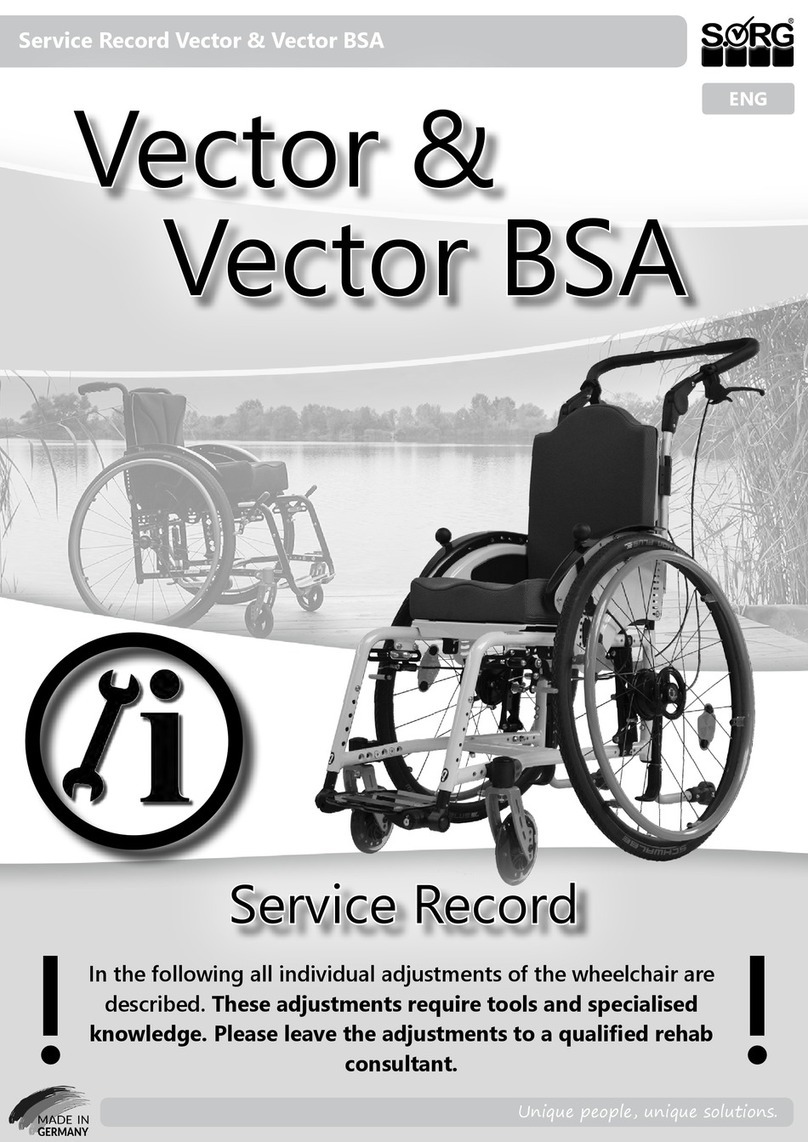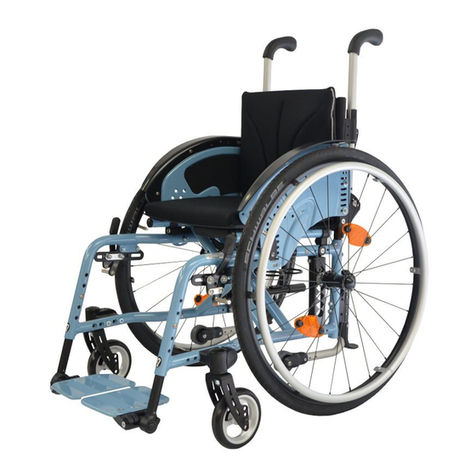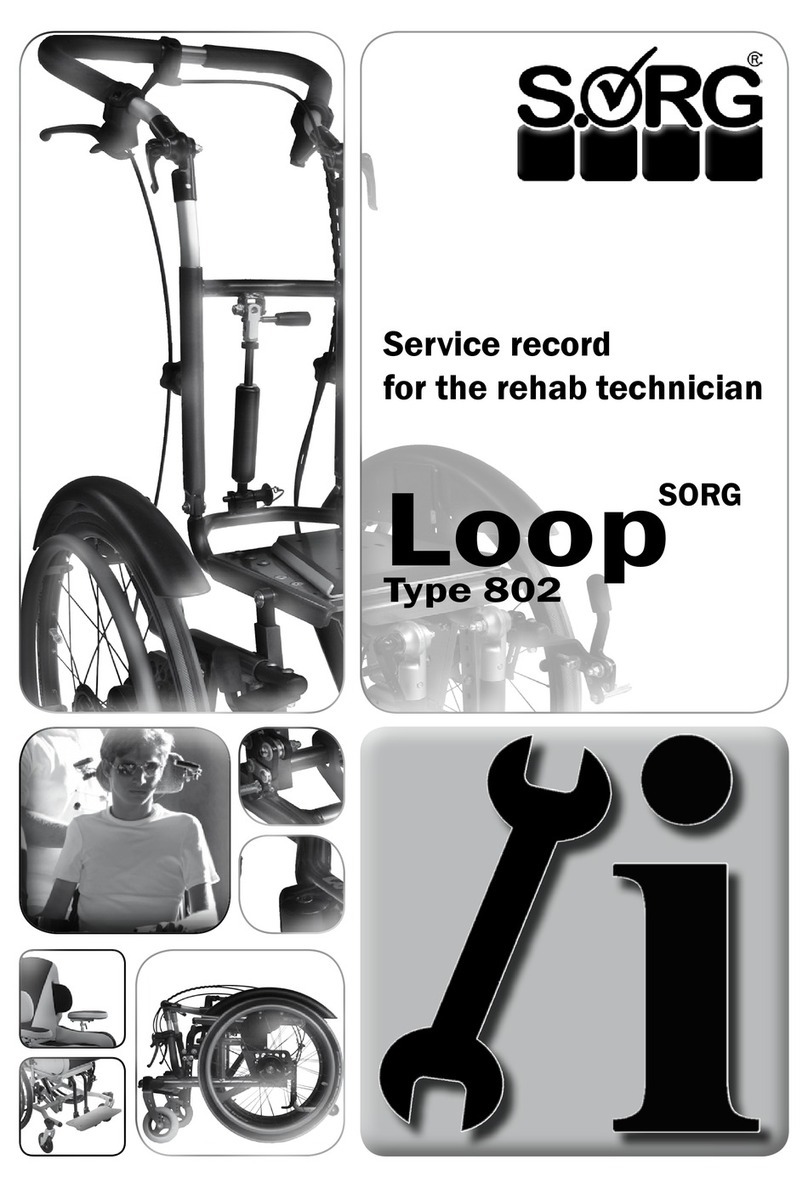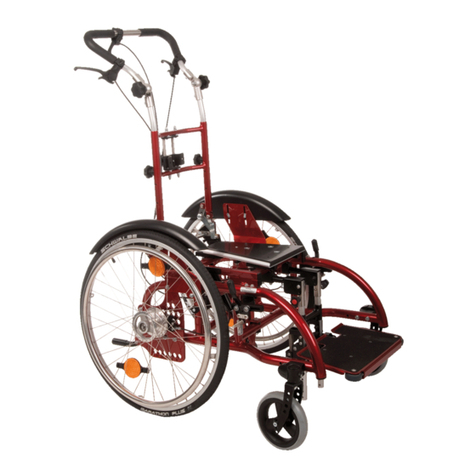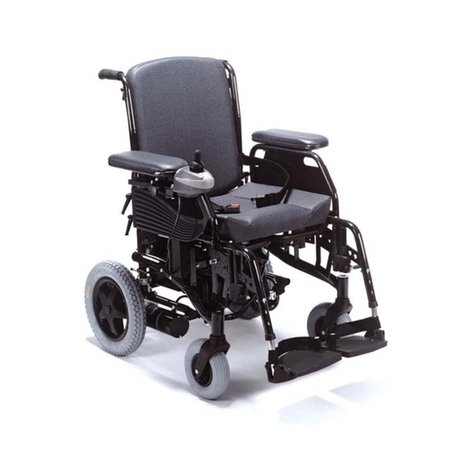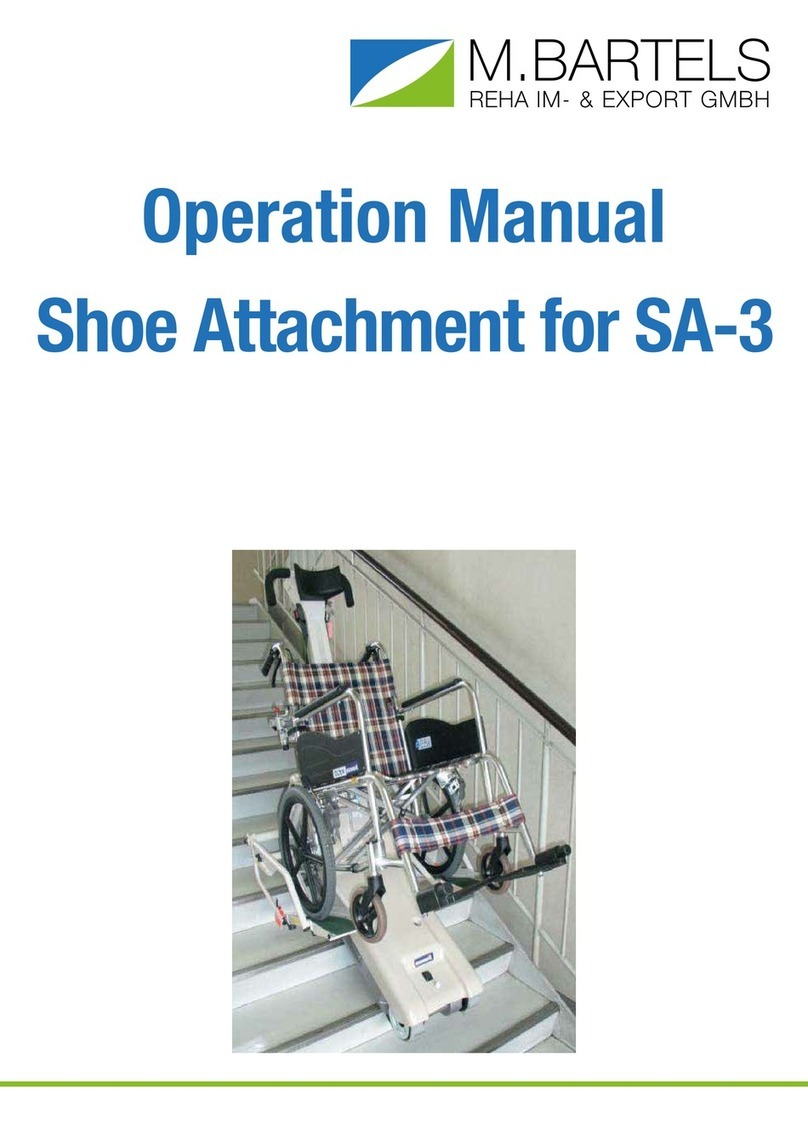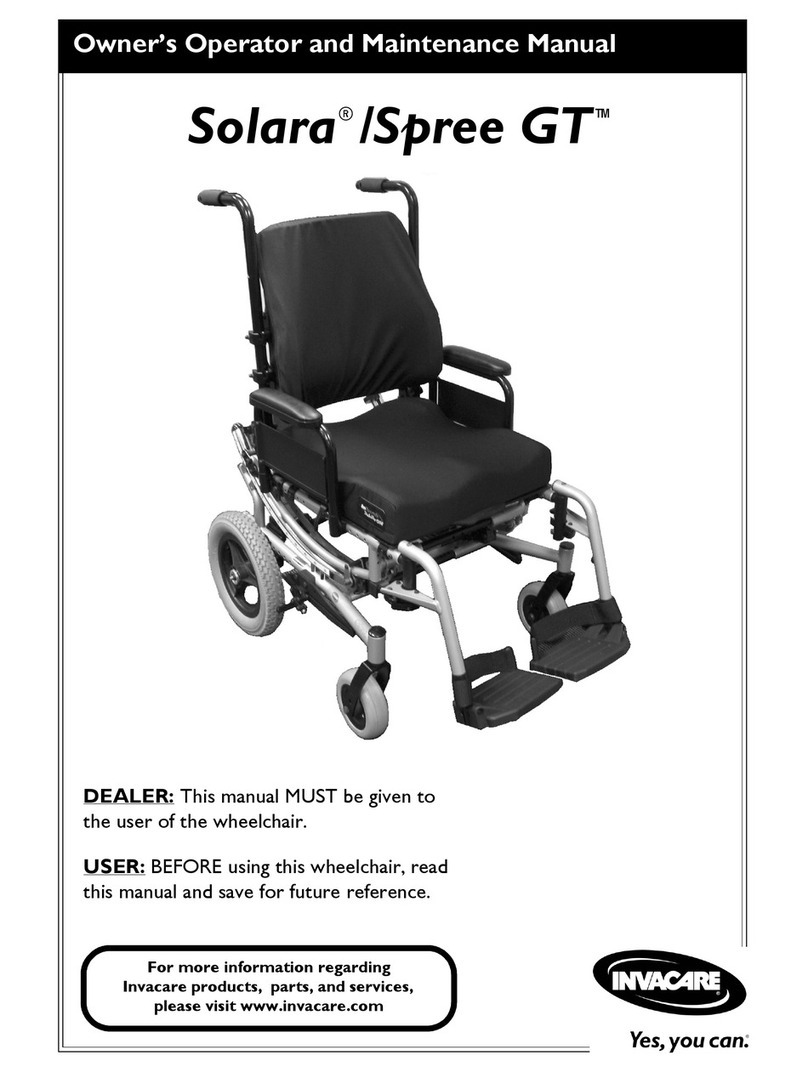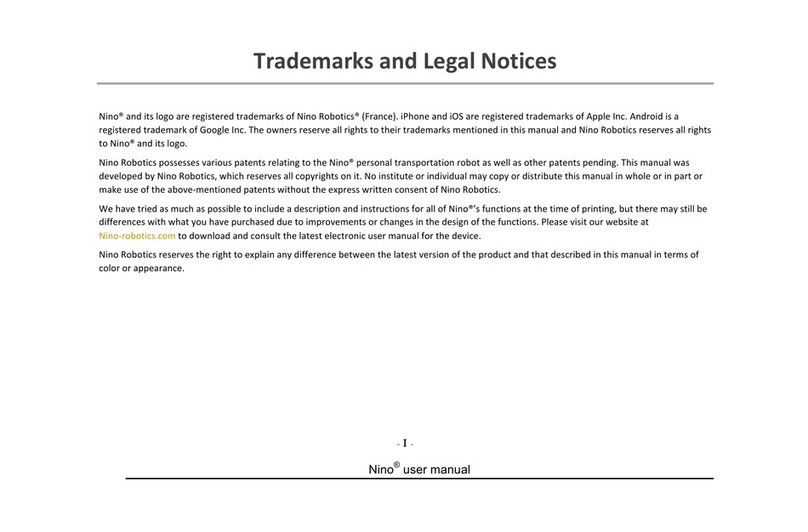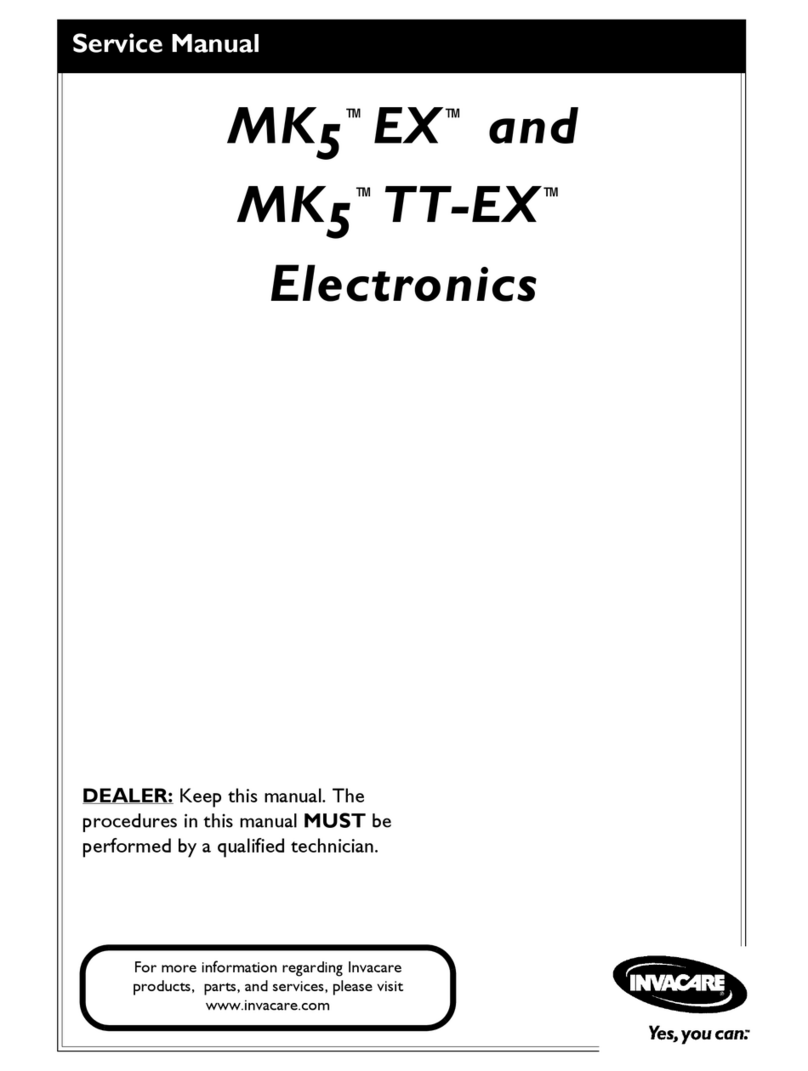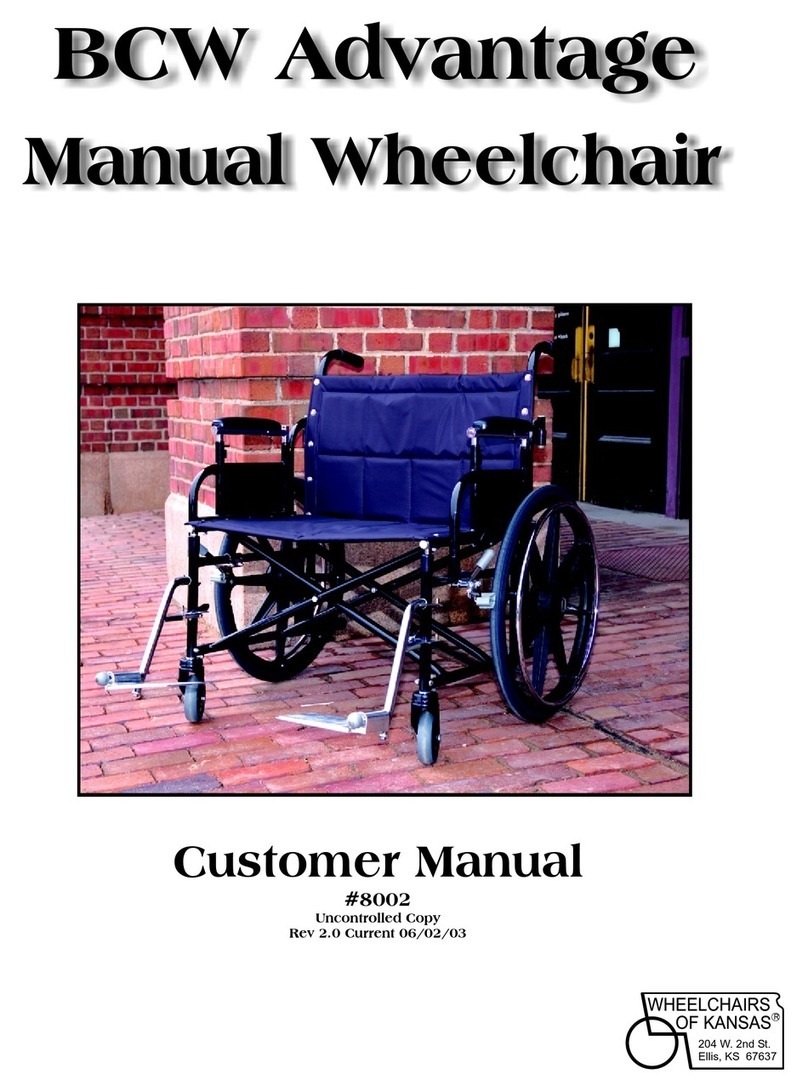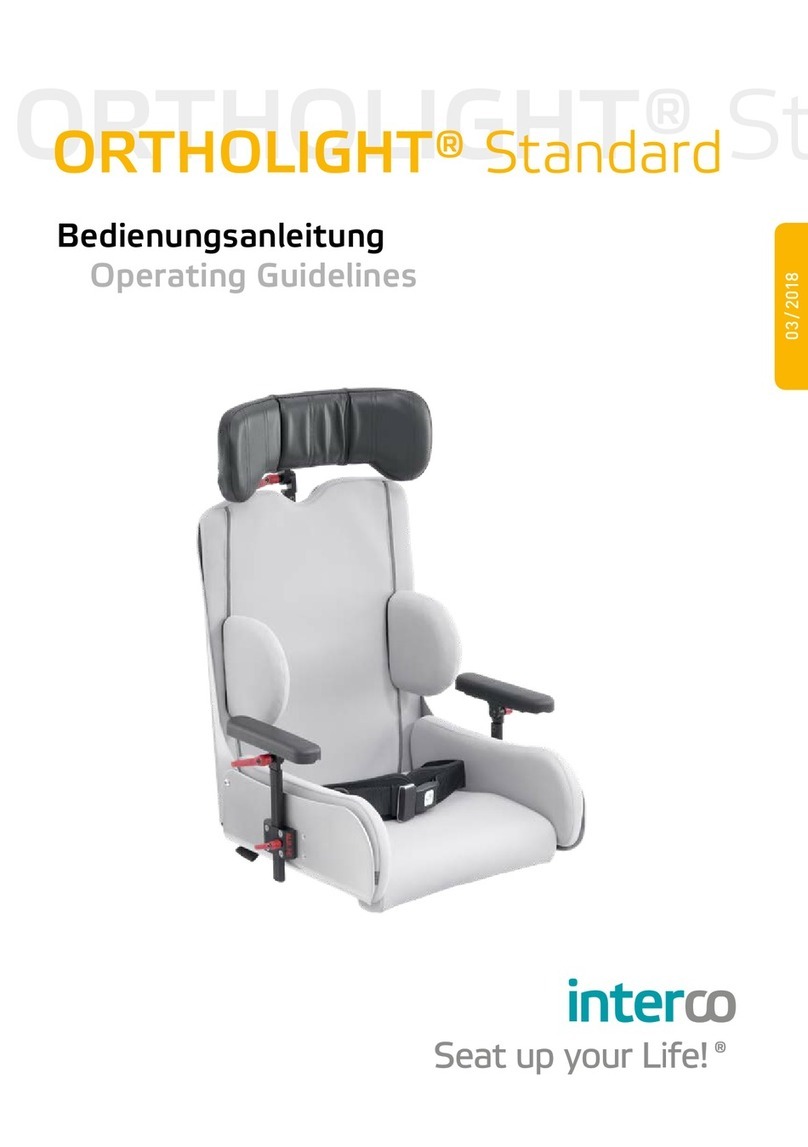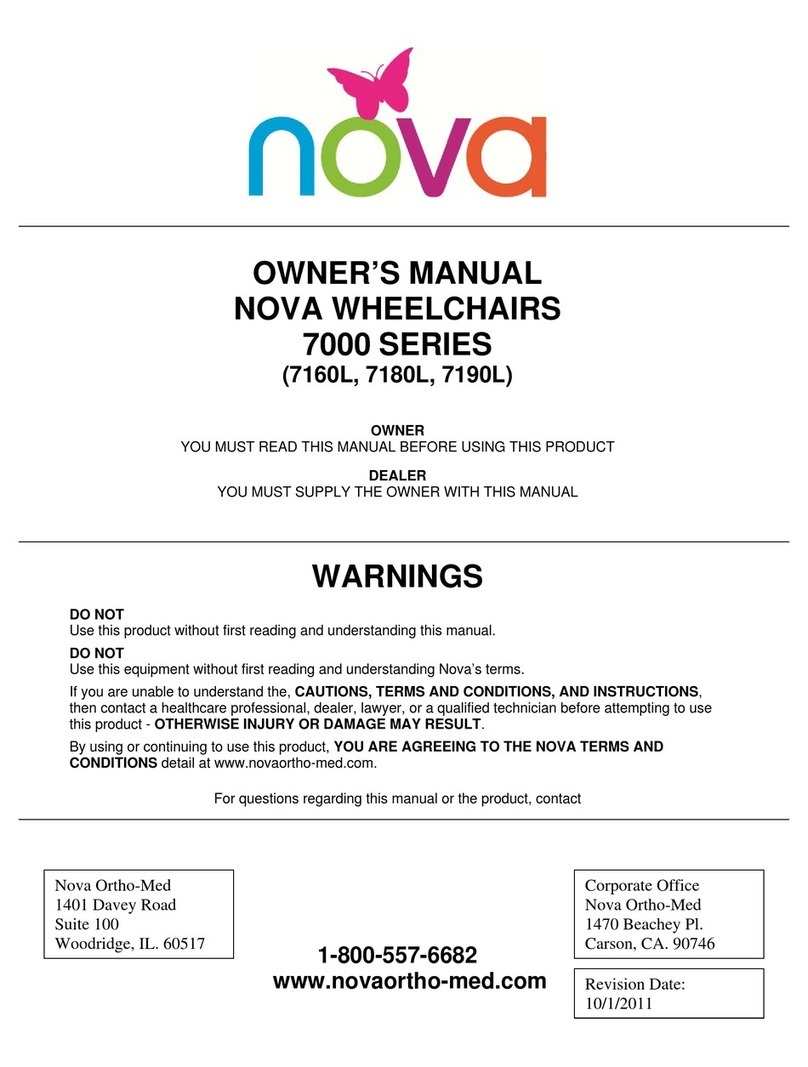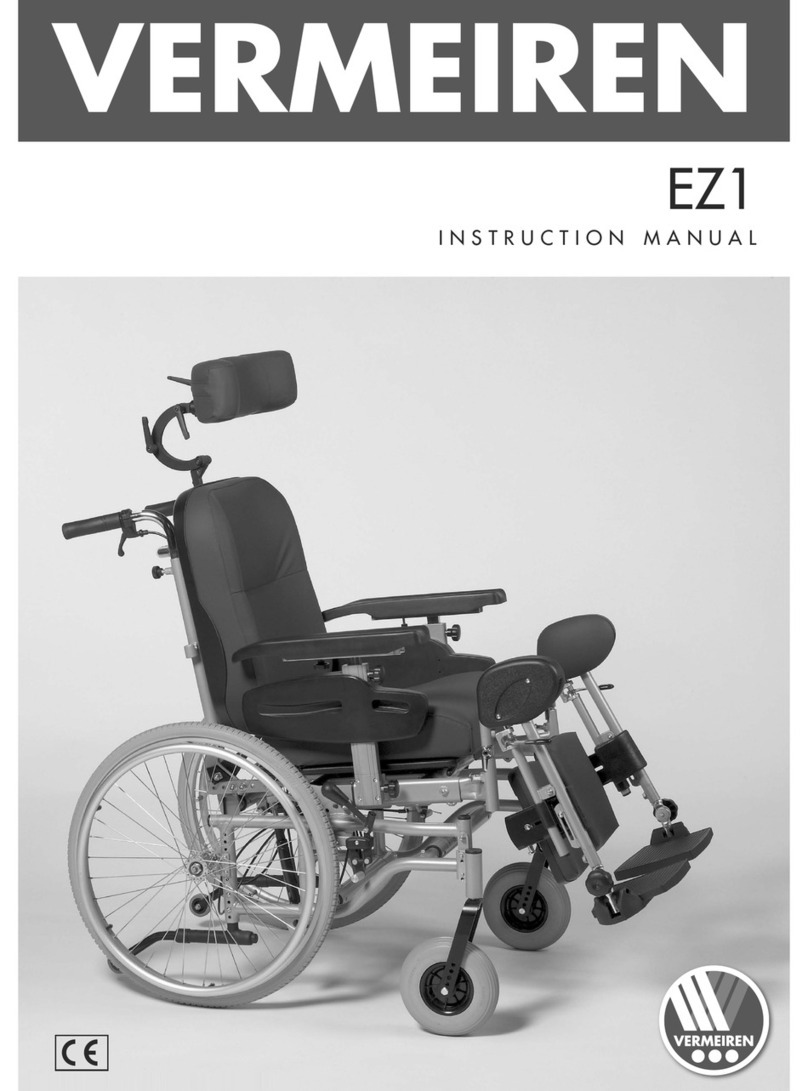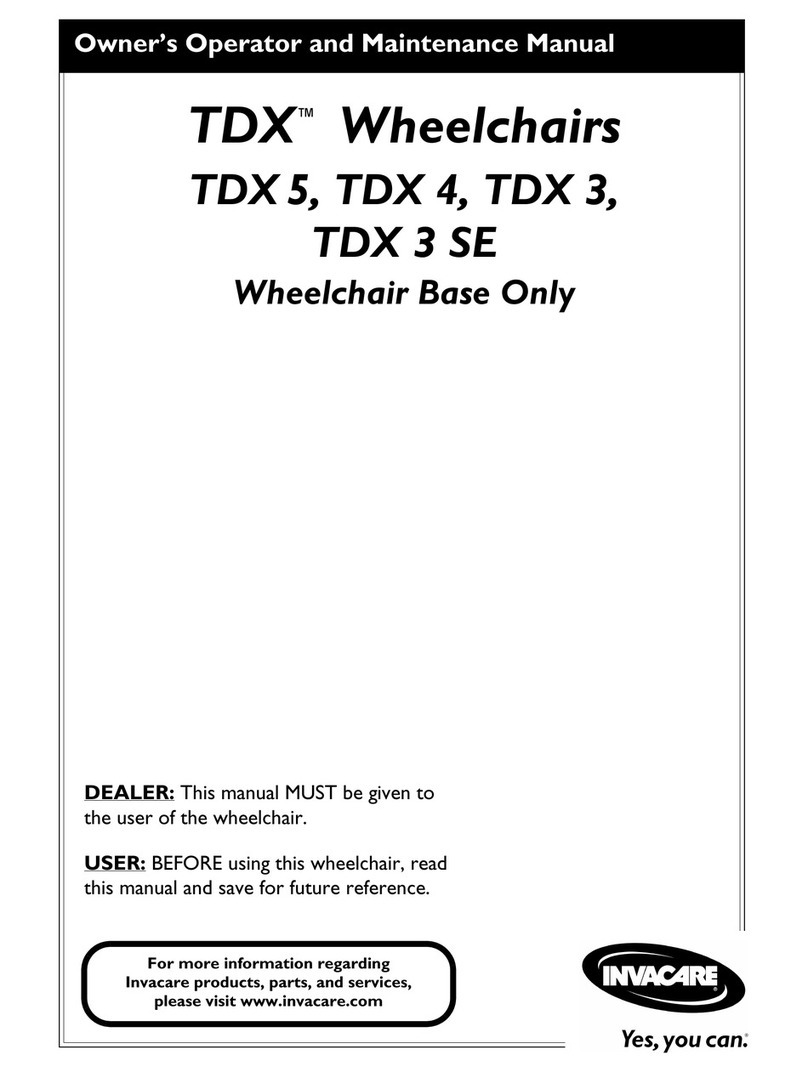6
1.7 RECEPTION
PLEASE NOTE
DELIVERY
Each wheelchair is mounted, tested for functionality
and correctness in our works and packaged into
special cardboard boxes by our shipping experts.
FORWARDING COMPANY
For liability reasons we have to ask you to check the
wheelchair immediately after receiving it and in the
presence of the deliverer (forwarding company) for
possible damages that may have occurred during
transportation.
TRANSPORTATION DAMAGES
In case of damage, please proceed as follows:
• write a short record of the damage and review
of events, if possible include pictures clearly
showing the damage,
• get the personal information of the bearer
(driver’s license etc.),
• inform us immediately.
�INDICATION
Do not sign the notice of receipt from the forwarding
company before thoroughly checking the wheelchair
for defects.
�INDICATIION
According to the valid law, damages reported late
can neither be asserted to us nor to the forwarding
company.
1.8 DOCUMENTATION
�INDICATION
Keep this user manual in a safe place. Have all work/
repairs done on your wheelchair documented by the
medical supply store in the maintenance plan. If
applicable, hand it back to your benefactor along
with the wheelchair.
�INDICATION
In the event of the wheelchair being reused, the
service book is an important source of information
for you benefactor. It provides evidence of regular
inspections which might be relevant in the event of
warranty claim.
ATTENTION
For safety reasons have all repairs done and
documented solely by a qualied specialized trade.
1.5 SPECIFICATION MIO MOVE
Mio Move is an active wheelchair that grows with your
child, with a mechanical tilt function in a physiologic
pivot point for children and adolescents:
• Sitting height and position are adjustable,
• tilt function in small steps 0° to +35°,
• back angle adjustment with a raster from
80° to 120°, additional Retro or Taurus
frame
• able to fold forward with two differently strong
V-formed abductions,
• back height grows in 5cm steps,
• seat grows in 2cm steps in the width and
(optional) 4cm steps in depth,
• clothing protection side part with an
integrated cable brake,
• double tip protection (optional),
• leg supports with continuous or divided
footrests mounted in the middle or under
the seat, distance free adjustable, can be
elevated (optional),
• steer and push assistance for outdoors
(outdoor stem),
• positioning assistance (side truss pads,
abduction wedge, anatomically formed seat,
head supports, extendable back elongation),
• one-hand assistance (double hand rim, one-
hand steering, one-hand braking),
• leg bearing(s),
• suitable for setting up the seat shell
• several rear wheels and casters
1.6 APPLICATION
ATTENTION
The wheelchair serves solely to actively or passively
transport the person to whom the wheelchair has
been adjusted for by a qualied specialized trade.
It can be used on rm ground without any restrictions
indoors and outdoors. With suitable equipment (e.g.
outdoor front end) the wheelchair can also be used on
surfaces such as sand, cobblestones, gravel etc.
ATTENTION
The allowed load capacity (including seat shell) is not
to be exceeded.
ATTENTION
The wheelchair cannot be used in extremely wet
surroundings (shower, sauna etc.) or salt water nor
can it have excessive contact with moisture.
ATTENTION
The wheelchair must not be used as means of
transportation for goods, objects and the like.
INFORMATION
Regular maintenance and care (after chapter 4)
is necessary for the guaranteed service life of the
wheelchair.

